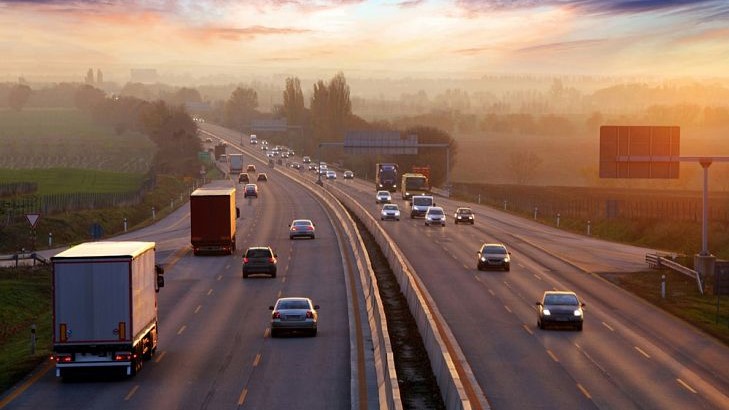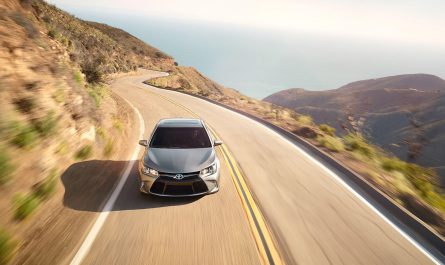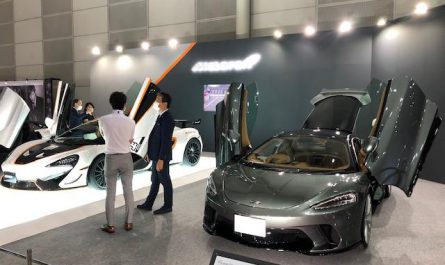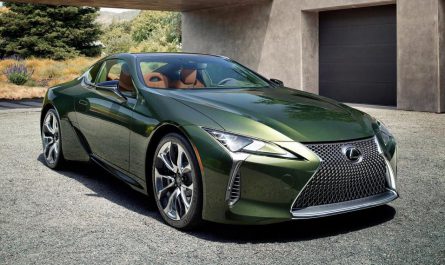Left-hand traffic (LHT) and right-hand traffic (RHT) are the practice, in bidirectional traffic, of keeping to the left side or to the right side of the road, respectively. A fundamental element to traffic flow, it is sometimes referred to as the rule of the road.
RHT is used in 165 countries and territories, with the remaining 75 countries and territories using LHT. Countries that use LHT account for about a sixth of the world’s area with about a third of its population and a quarter of its roads. In 1919, 104 of the world’s territories were LHT and an equal number were RHT. Between 1919 and 1986, thirty-four of the LHT territories switched to RHT. In LHT vehicles keep left, and cars are RHD (right-hand drive) with the steering wheel on the right-hand side and the driver sitting on the offside or side closest to the center of the road. The passenger sits on the nearside, closest to the curb. Roundabouts circulate clockwise. In RHT everything is reversed: cars keep right, the driver sits on the left side of the car, and roundabouts circulate counterclockwise.
It is very difficult to find specific reasons why some countries choose to move to the left and others to the right. Different explanations have been put forward, but most often without proof.
A common explanation is that the medieval riders, like those of Antiquity, circulated on the left of the roads, holding their reins in the left hand so they could more easily draw their sword with their right hand in case of attack or to send friendly greetings more easily. This theory does not seem to have any historical foundation, as no document proves it. It may be supposed, however, that they were rather on the center of the roads, where they were the most practicable, and that the attack of an adversary situated on the left side of the road would be more difficult to parry. Moreover, this explanation does not say what the left-handed knights were supposed to do or how this tradition would have been perpetuated through the centuries. This explanation is also given in Japan.
Until then, no one had thought of regulating road traffic. In 1300, Pope Boniface VIII (1295-1303) created the first Jubilee. Faced with the great influx of pilgrims in the city of Rome, he imposed left-hand traffic in the city of Rome in the neighborhoods near St. Peter’s Basilica. He advised the pilgrims to walk on the left side of the road. This papal edict pushed Europe to move left for nearly four centuries.
The first cars had the handbrake on the outside, on the right side (so that it could be tightened with the right hand with more force). The driving position was on the right. At that time, the maneuvering of the crossing was difficult: on narrow roads, the vehicles had to move away from each other as much as possible. To best achieve this, the driver had to stand on the side of the side of the road to see if the wheels did not come out of the road. The driving position being on the right, cars were driving on the right side of the road. Later, the handbrake found itself in the center of the cabin. Some automakers have moved the driver’s station to the left so that the brake remains accessible to the right hand, others (like the British) have not changed anything.
It can be estimated that one third of the world’s population lives in countries where motorists drive on the left, mainly former British colonies (although Indonesia, Thailand and Japan are not former British colonies and Canada, former British colony, right-hand drive and left-hand drive coexisted at certain times, depending on the province).
In Europe, there are the United Kingdom, Ireland, Malta, Cyprus, the Isle of Man and the Channel Islands, all of which are islands and former British possessions. Elsewhere in the world, left-hand drive is found in southern and south-eastern Africa, the Indian subcontinent, Japan, much of the South Pacific, some Caribbean islands and two countries. South America (Guyana, formerly British Guiana and Suriname, formerly Dutch Guiana).

List of LHD countries
161 countries follow the right-hand drive system. All traffic remains to the right and passing is from the left and oncoming traffic comes from the left.
The Left turning traffic must cross oncoming traffic. The Traffic on roundabouts move anti clockwise.
Pedestrians crossing roads must see first the traffic coming from the right side.
Afghanistan, Aland Islands (Finland), Algeria, American Samoa (US), Andorra,
Angola (1928), Argentina, Armenia, Aruba (Netherlands), Austria (1936), Azerbaijan, Bahrain (1978), Belarus,
Belgium, Belize, Benin, Bolivia, Bosnia & Herzegovina, Brazil, British Indian Ocean Territory, Burkina Faso,
Burundi, Cambodia, Cameroon, Canada, Cape Verde, Central African Republic, Chad, Chile, China,
Colombia, Comoros, Congo Brazzaville, Congo Kinshasa, Costa Rica, Cote D’ Ivoire, Croatia, Cuba,
Czech Republic, Denmark, Djibouti, Dominican Republic, Ecuador, Egypt, El Salvador, Equatorial Guinea,
Eritrea, Estonia, Ethiopia, Faroe Islands, Finland, France, French Guyana, French Polynesia, Gabon, Gambia,
Georgia, Germany, Ghana, Gibraltar, Greece, Guadeloupe, Guam, Guatemala, Guinea, Guinea Bissau, Haiti, Honduras,
Hungary, Iceland, Iran, Iraq, Israel, Italy, Jordan, Kazakhstan, Korea-North, Korea-South, Kuwait, Kyrgyzstan, Laos,
Latvia, Lebanon, Liberia, Libya, Liechtenstein, Lithuania, Libya, Luxembourg, Macedonia, Madagascar, Mali,
Marshal Islands, Martinique, Mauritania, Mayotte, Mexico, Micronesia, Midway Atoll, Moldova, Monaco, Mongolia;
Morocco, Mozambique, Myanmar, Netherlands, Netherlands Antilles, New Caledonia, Nicaragua, Niger, Nigeria,
Northern Mariana Island, Norway, Palau, Panama, Paraguay, Peru, Philippines, Poland, Portugal, Puerto Rico, Qatar,
Reunion, Romania, Russia, Rwanda, Saint Pierre & Miquelon, San Marino, Sao Tome & Principe, Saudi Arabia, Senegal,
Serbia and Montenegro, Sierra Leone, Slovakia, Somalia, Spain, Sudan, Svalbard (Norway), Sweden, Switzerland, Syria,
Taiwan, Tajikistan, Togo, Tunisia, Turkey, Turkmenistan, Ukraine, United Arab Emirates, United States, Uruguay, Uzbekistan, Vanuatu, Vatican City, Venezuela, Vietnam, Wake Island (US), Wallis & Futuna (France), Western Sahara, Yemen.
List of RHD Countries
75
countries drive on the left side of the road. All traffic
remains to the left and passing is from the right side. Oncoming
traffic comes from the right. Right turning traffic must
cross oncoming traffic. The Traffic on roundabouts move towards
clockwise. Pedestrians crossing roads must see first the traffic coming
from the Left side.
Asia
Bangladesh, Bhutan, Brunei, East Timor, Hong Kong, Indonesia, India, Japan, Macau, Malaysia, Nepal, Pakistan, Singapore, Sri Lanka, Thailand.
Africa
Botswana, Kenya, Lesotho, Malawi, Mozambique, Namibia, South Africa, Swaziland, Tanzania, Uganda, Zambia, Zimbabwe.
Australia and Oceania
Australia, Christmas Island (Australia), Cocos Islands (Australia), Cook Islands (New Zealand), Fiji, Kiribati, Nauru, New Zealand, Niue, Norfolk Island (Australia),
Papua New Guinea, Pitcairn Islands (UK), Solomon Islands, Tokelau (New Zealand), Tonga Tuvalu.
Europe
Cyprus, Guernsey (UK), Ireland, Isle of Man (UK), Jersey (UK), Malta, United Kingdom.
South America
Guyana, Surinam
West Indies
Anguilla (UK), Antigua and Barbados, Bahamas, Barbados, British Virgin Islands (UK), Cayman Islands (UK), Dominica, Grenada, Jamaica, Montserrat (UK), Saint Kitts and Navis, Saint Lucia, Saint Vincent and the Grenadines, Trinidad and Tobago, Turks and Calico Islands (UK), Virgin Islands (US)
On islands of the Atlantic Ocean
Bermuda (UK), Falkland Islands (UK), Saint Helena, Ascension and Tristan da Cunha (UK), South Georgia and South Sandwich Islands (UK)
On islands of the Indian Ocean
Maldives, Mauritius, Seychelles
Converting Used Japanese Cars?
Before
After
Even if you live in a country that follows left-hand driving rules, importing and driving a used car from Japan is still possible for you. Usually, Japanese cars are designed for right-hand driving. However, you can always get the car converted before or after importation. However, conversion in Japan consumes more time and cost. Therefore, conversion on the local side is cheaper and well done. If you want to know more about how you can import a Japan used car to your country and how to convert, contact Nikkyo today!
Article Written By Jaden El Kadiri © 2019-11-06









